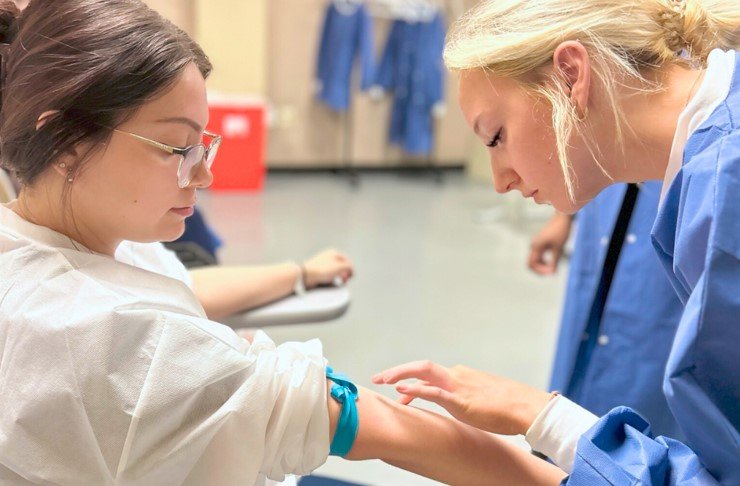Ensuring Adequate Supply of Vaccines and Equipment in Hospitals with Collaboration and Technology
Summary
- Hospitals need to proactively monitor their supply levels and adjust their orders to ensure they have enough vaccines and equipment on hand to meet increased demand.
- Collaboration with suppliers and other hospitals can help hospitals share resources and information to address potential shortages.
- Utilizing technology and data analysis can help hospitals make informed decisions about Supply Chain management and anticipate future needs.
Introduction
Vaccination hesitancy is a growing concern in the United States, with more and more people expressing doubts about the safety and efficacy of vaccines. This hesitancy can lead to lower vaccination rates, which in turn can result in outbreaks of preventable diseases. Hospitals must be prepared to respond to potential increases in demand for vaccines and related equipment in order to protect public health. In this article, we will explore how hospitals can ensure an adequate supply of vaccines and equipment to address the potential increase in demand due to vaccination hesitancy.
Monitoring and Adjusting Supply Levels
One of the most important steps hospitals can take to address potential increases in demand for vaccines and equipment is to proactively monitor their supply levels. By regularly assessing their inventory and consumption rates, hospitals can identify any shortages or surpluses and adjust their orders accordingly. This can help prevent stockouts and ensure that hospitals have enough supplies on hand to meet increased demand.
Key Strategies:
- Implementing a robust inventory management system to track supply levels in real-time.
- Establishing clear protocols for ordering and restocking vaccines and equipment based on consumption data.
- Collaborating with suppliers to establish reliable supply chains and expedite deliveries when needed.
Collaboration with Suppliers and Other Hospitals
Collaboration is key to addressing potential shortages of vaccines and equipment. By working closely with suppliers, hospitals can secure priority access to critical supplies and negotiate favorable pricing terms. Additionally, by collaborating with other hospitals in their region, hospitals can share resources and information to address shortages collectively.
Key Strategies:
- Establishing partnerships with multiple suppliers to diversify supply chains and reduce reliance on a single source.
- Participating in group purchasing organizations to leverage collective buying power and secure competitive prices.
- Sharing best practices and lessons learned with other hospitals to improve Supply Chain resilience.
Utilizing Technology and Data Analysis
Technology and data analysis can play a critical role in helping hospitals manage their supply chains effectively. By leveraging data analytics tools, hospitals can gain insights into their consumption patterns and anticipate future needs. This can help hospitals make informed decisions about inventory management and purchasing, allowing them to stay ahead of potential supply shortages.
Key Strategies:
- Implementing a Supply Chain management system that integrates data from multiple sources to provide a comprehensive view of supply levels and consumption patterns.
- Utilizing predictive analytics to forecast future demand for vaccines and equipment based on historical data and current trends.
- Deploying automation tools to streamline ordering and inventory tracking processes and reduce the risk of human error.
Conclusion
Ensuring an adequate supply of vaccines and equipment is essential for hospitals to address potential increases in demand due to vaccination hesitancy. By proactively monitoring their supply levels, collaborating with suppliers and other hospitals, and utilizing technology and data analysis, hospitals can enhance their Supply Chain management practices and better prepare for future challenges. By taking these steps, hospitals can safeguard public health and ensure that they are equipped to meet the needs of their communities.

Disclaimer: The content provided on this blog is for informational purposes only, reflecting the personal opinions and insights of the author(s) on the topics. The information provided should not be used for diagnosing or treating a health problem or disease, and those seeking personal medical advice should consult with a licensed physician. Always seek the advice of your doctor or other qualified health provider regarding a medical condition. Never disregard professional medical advice or delay in seeking it because of something you have read on this website. If you think you may have a medical emergency, call 911 or go to the nearest emergency room immediately. No physician-patient relationship is created by this web site or its use. No contributors to this web site make any representations, express or implied, with respect to the information provided herein or to its use. While we strive to share accurate and up-to-date information, we cannot guarantee the completeness, reliability, or accuracy of the content. The blog may also include links to external websites and resources for the convenience of our readers. Please note that linking to other sites does not imply endorsement of their content, practices, or services by us. Readers should use their discretion and judgment while exploring any external links and resources mentioned on this blog.

